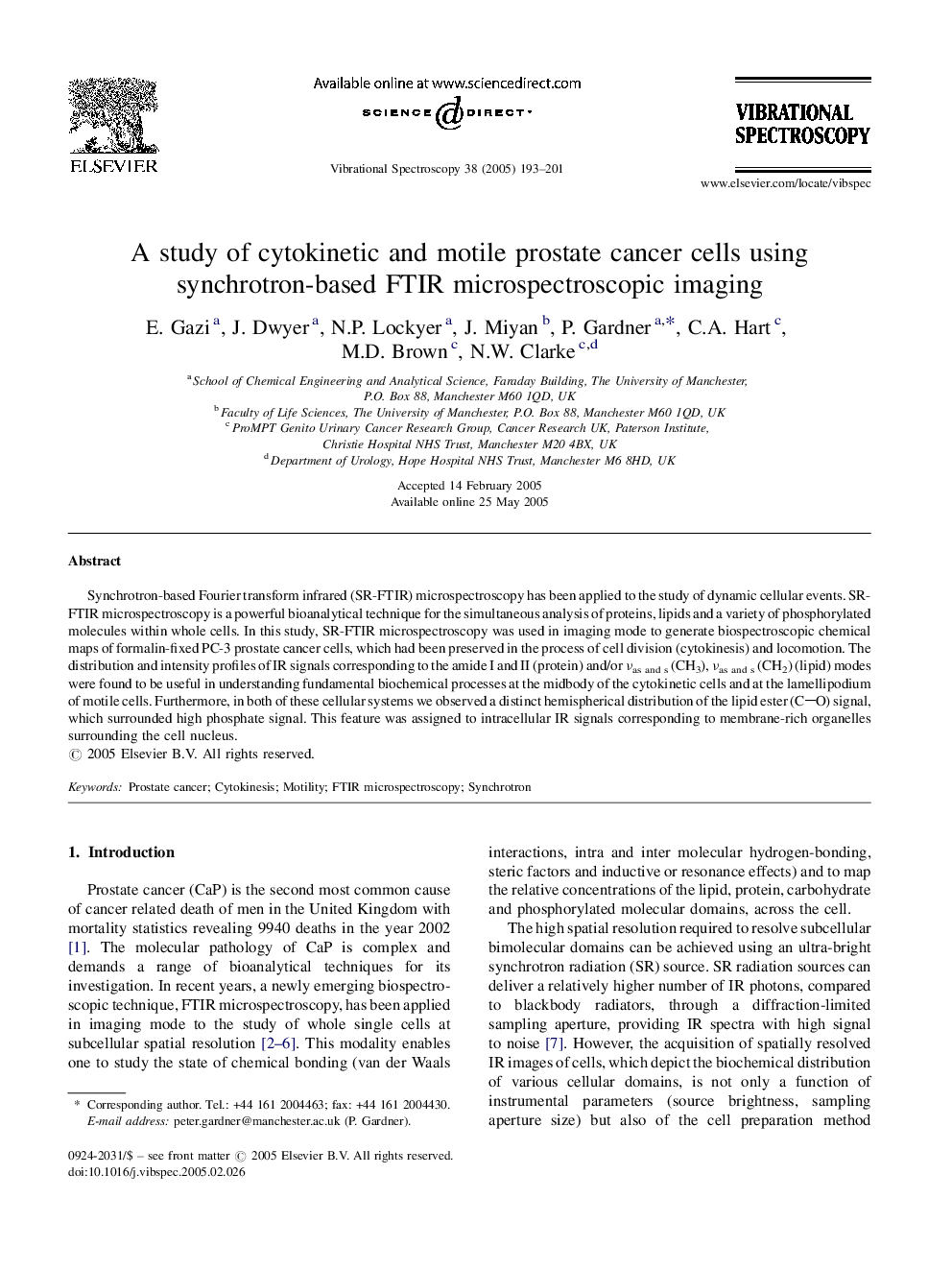| Article ID | Journal | Published Year | Pages | File Type |
|---|---|---|---|---|
| 9757472 | Vibrational Spectroscopy | 2005 | 9 Pages |
Abstract
Synchrotron-based Fourier transform infrared (SR-FTIR) microspectroscopy has been applied to the study of dynamic cellular events. SR-FTIR microspectroscopy is a powerful bioanalytical technique for the simultaneous analysis of proteins, lipids and a variety of phosphorylated molecules within whole cells. In this study, SR-FTIR microspectroscopy was used in imaging mode to generate biospectroscopic chemical maps of formalin-fixed PC-3 prostate cancer cells, which had been preserved in the process of cell division (cytokinesis) and locomotion. The distribution and intensity profiles of IR signals corresponding to the amide I and II (protein) and/or νas and s (CH3), νas and s (CH2) (lipid) modes were found to be useful in understanding fundamental biochemical processes at the midbody of the cytokinetic cells and at the lamellipodium of motile cells. Furthermore, in both of these cellular systems we observed a distinct hemispherical distribution of the lipid ester (CO) signal, which surrounded high phosphate signal. This feature was assigned to intracellular IR signals corresponding to membrane-rich organelles surrounding the cell nucleus.
Related Topics
Physical Sciences and Engineering
Chemistry
Analytical Chemistry
Authors
E. Gazi, J. Dwyer, N.P. Lockyer, J. Miyan, P. Gardner, C.A. Hart, M.D. Brown, N.W. Clarke,
